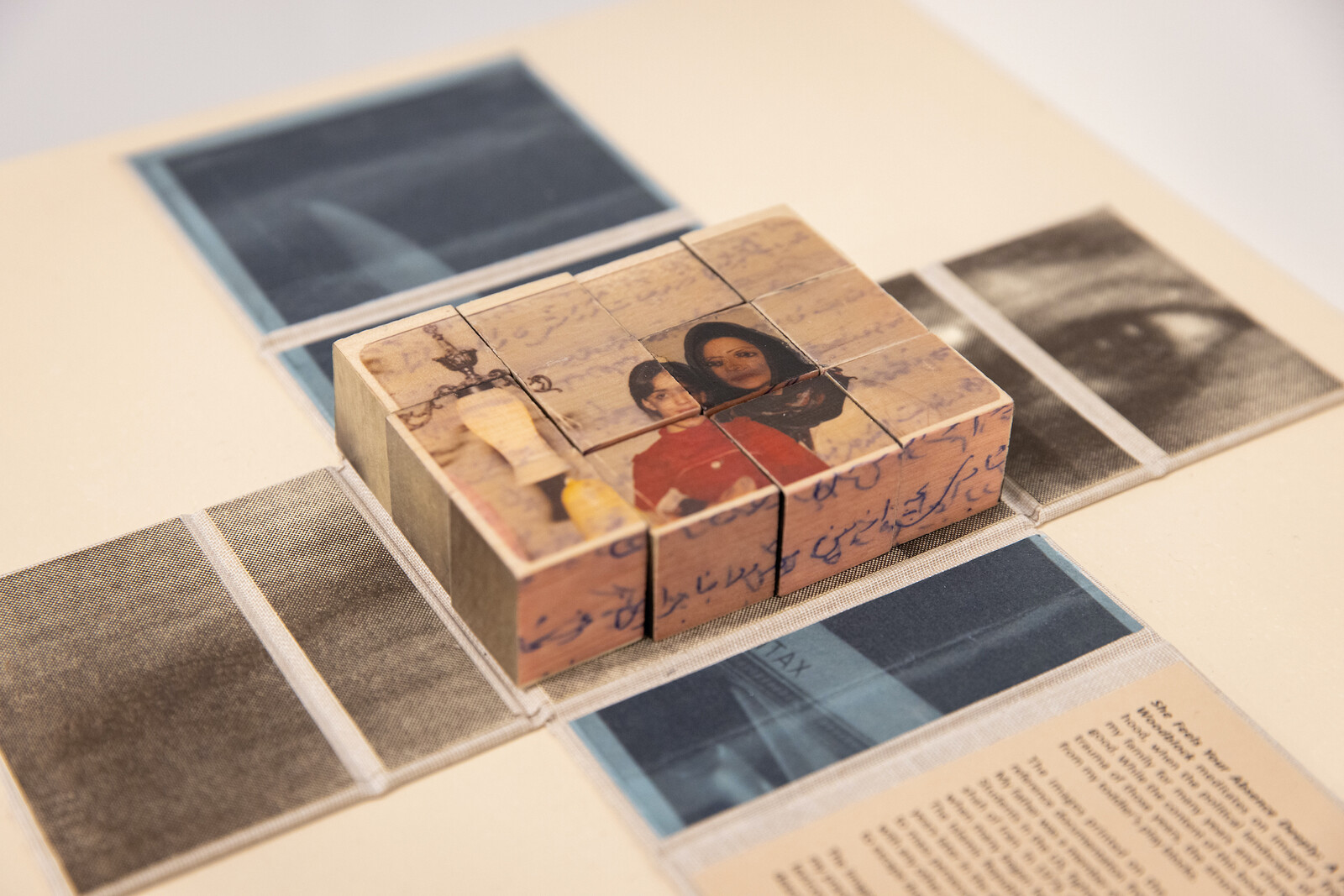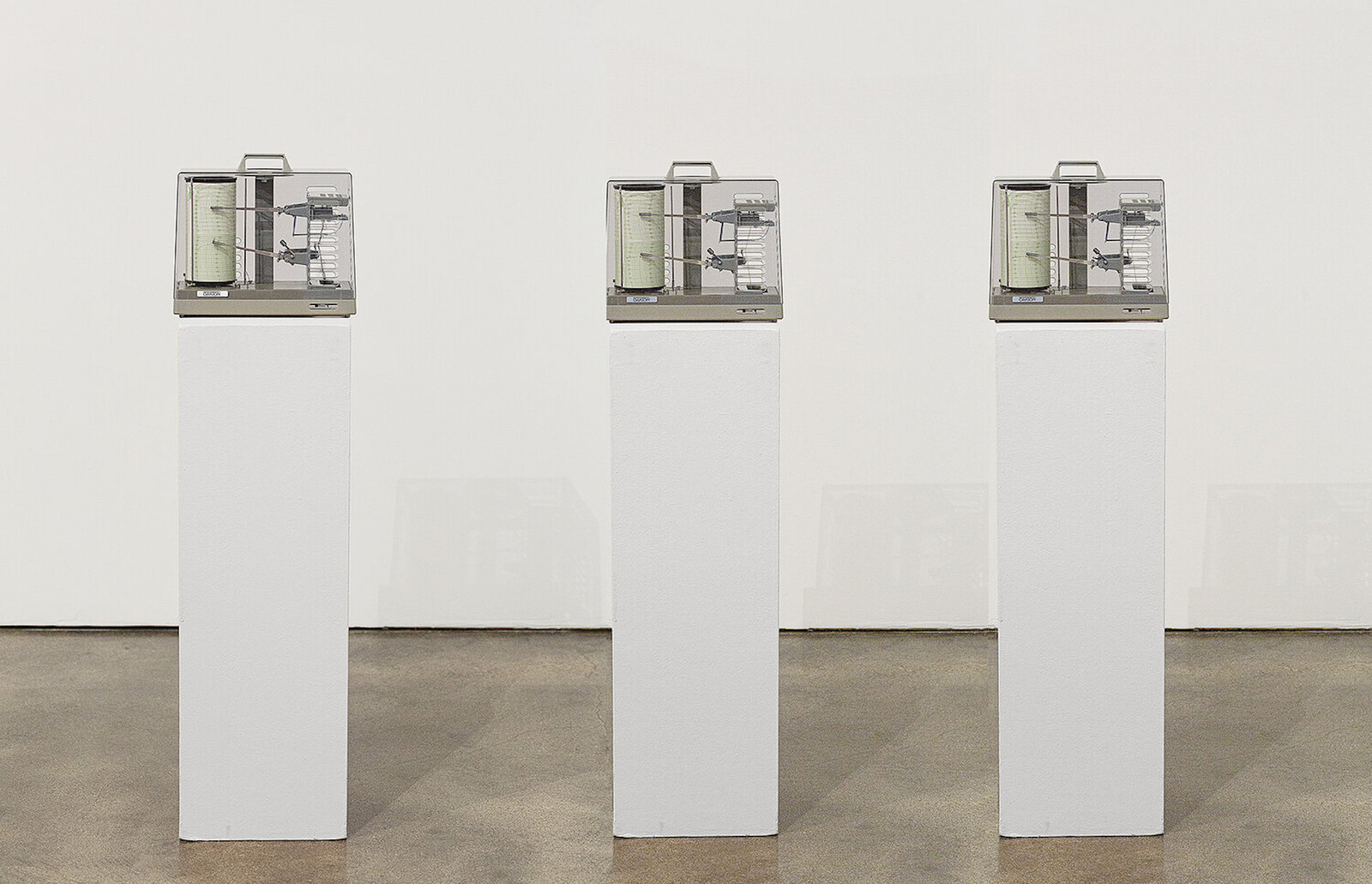Categories
Subjects
Authors
Artists
Venues
Locations
Calendar
Filter
Done
February 17, 2022 – Review
Golnar Adili’s “Found in Translation: A Story of Language, Play, and a Personal Archive”
Dina Ramadan

“Found in Translation” is a quiet exhibition that exudes a palpable sense of yearning for a past that never quite was. Golnar Adili’s childhood was shaped by the fracturing of her family due to political events; born in Virginia, she returned with her parents to their home country of Iran in the wake of the 1979 revolution. Her father, a leftist activist, soon returned to the United States, forced into exile by his political convictions. The exhibition is an expansive yet cohesive “lexicon of displacement” (in Adili’s words) articulated through a floor installation, sculptures, digital and silkscreen prints, and photo lithography.
The first piece we encounter is She Feels Your Absence Deeply - Pixels (2017), a digital image of the artist and her mother printed on delicate Japanese paper and reconstructed in a grid of quarter-inch wood cubes reminiscent of children’s building blocks. The two subjects, seated close together, stare directly at the camera with gravitas, intent on capturing the moment, no matter how joyless. Titled after a line in a letter from Adili’s mother to her husband, in which she describes their daughter’s visceral response to the family’s disintegration, the piece evokes many of the exhibition’s essential themes; the (re)construction …
November 24, 2020 – Review
Yara El-Sherbini’s “Forms of Regulation and Control”
Dina Ramadan

It is impossible to separate my experience of Yara El-Sherbini’s “Forms of Regulation and Control” from the circumstances surrounding the viewing: the end of a balmy November day, awash with the jubilation of Donald Trump’s electoral defeat. The first US solo exhibition for British-born, Santa Barbara–based El-Sherbini, curated by Naeem Mohaiemen, is an elegant rejoinder to the din of recent months. Deftly weaponizing humor through a series of discreet interventions, it challenges the so-called “unconscious” bias that permeates even the most seemingly benign forms of knowledge and their production.
“Forms of Regulation and Control” is an exhibition conceived and reconceptualized in the wake of the pandemic; El-Sherbini’s work, usually tactile and interactive, is incompatible with our current socially distanced reality. The game “Border Control” (2017), the only pre-pandemic piece in the show, is an example of the kind of audience participation El-Sherbini usually employs. In something reminiscent of the children’s game, players must trace a charged metal wire shaped like the US-Mexican border with a circular metal tool, all the while avoiding making contact with it: if they do, they will sound off alarms and lights. And yet the way in which the exhibition has been reimagined serves to highlight …